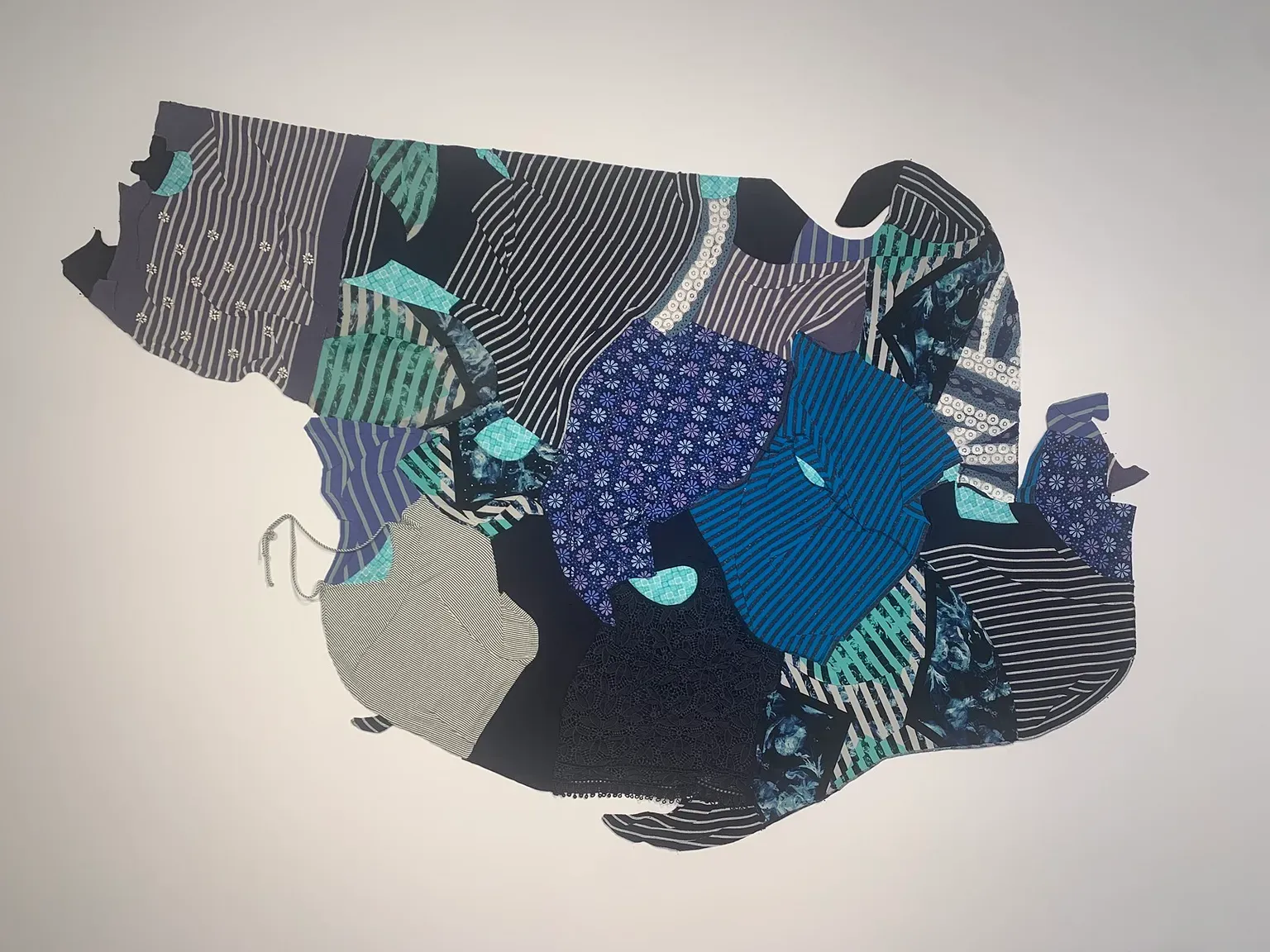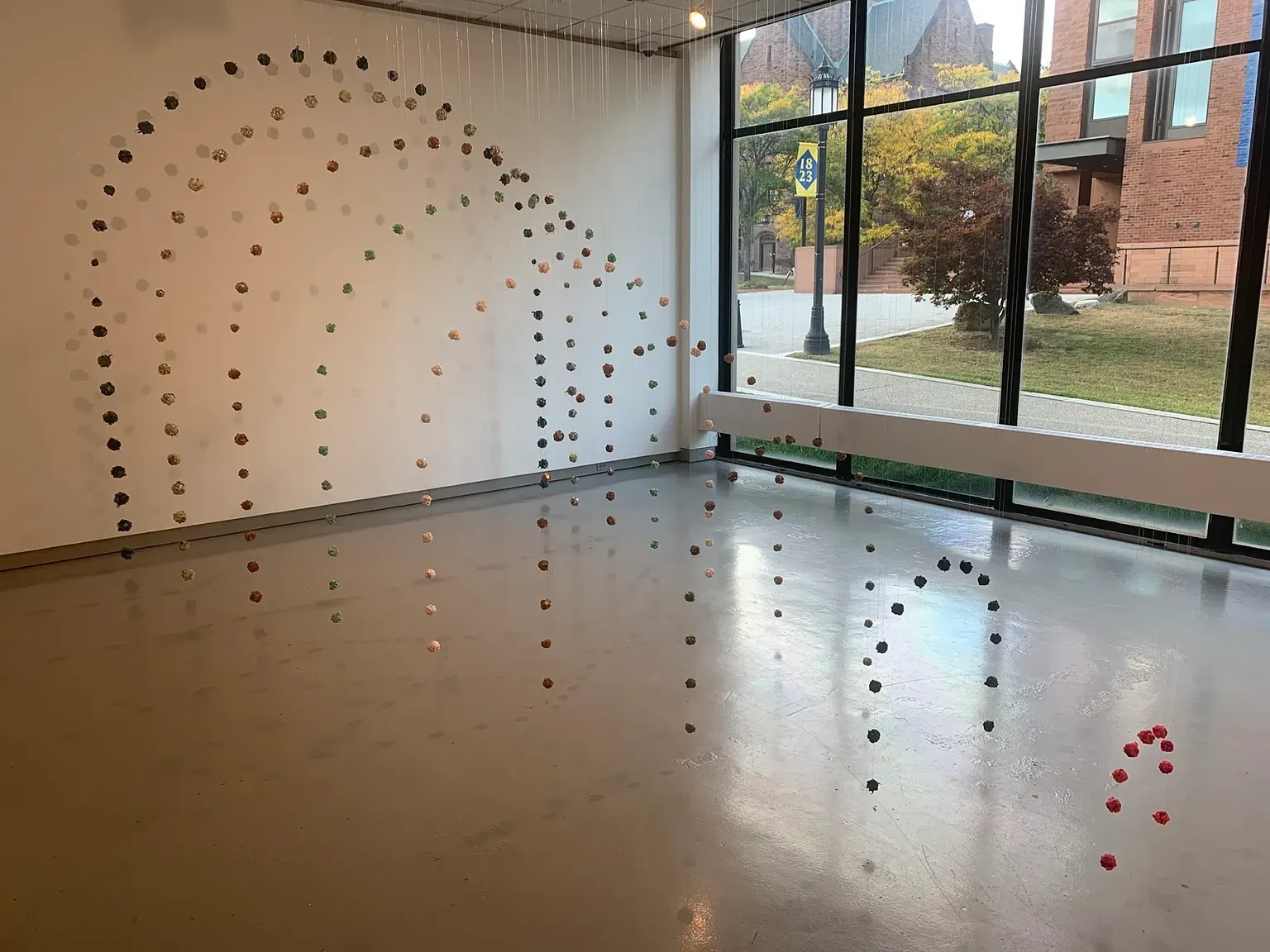Detritus
Widener Gallery
Austin Arts Center
Trinity College
Hartford
Oct. 1, 2024
After the shocking flooding that tore through Western Connecticut just a few weeks ago, it’s more apparent than ever that climate change does not only mean a few warmer days here and disaster over there. It’s catastrophe everywhere, and the art is showing us, including the art in the latest exhibit at Trinity College’s Widener Gallery.
The exhibit, Detritus, features work from four artists who have taken discarded objects and turned them into pieces that comment on consumerism and pollution.

“Art exhibitions focusing on environmental issues have been permeating museums and galleries in recent years,” Lisa Lynch, the director of the Widener Gallery, said in a statement. “It is not a coincidence that the immediate and widespread focus among artists and art institutions coincides with a seemingly exponential increase in extreme environmental events. It seems an apt time to present an exhibition that draws attention to our culture of expendability and its ramifications.”
Abstract Landscape II by Faustin Adenirand represents a twisted and contorted view of the world. The bent frame speaks to the distortion of nature around us, setting the very way we perceive the world askew. The streaks of tar mar the rest of the work, like black sludge and runoff and dumping and carbon dioxide emissions and all the other ways that humans have found to pollute the environment around us.

Kathryn Frund’s Cape Cod Bay is an intriguing piece of art that I can confidently say I completely whiffed on interpreting. When I saw it, I thought it was an abstraction of the United States, represented by various oil spills of different shapes and sizes. I may have been thinking this way because I recently learned that the United States is the world’s leading producer of oil — not Saudi Arabia, not Russia, us. That fact flew in the face of everything I’ve heard our leaders say about the need to “go green” and sustainability, but explains Kamala Harris’ disappointing flip-flopping on fracking.
I at least got the environmental part right, but Frund is more concerned with the way that consumerism impacts the ocean and waterways, hence her focus on Cape Cod.
The most striking piece of art greets you as soon as you walk in, literally towering over the rest of the exhibit. Ian Trask’s We’re Not Going Back is nine arches, each a foot taller than the other. The dots that comprise the arches are miscellaneous bits of junk and trash bound together. It’s a wondrous piece of art, until you stop and think about just how much “found material” Trask must have come across in order to realize his vision. Then it takes on an ominous feel.
Trask was also wise enough to include some of the notes he used for We’re Not Going Back. The meticulous planning, attention to detail, and math involved in his work demonstrate that while art may be spontaneous, it is never arbitrary.
The artists are trying to warn us about the future that we continue to get glimpses of, yet blithely continue to hurtle towards. The masses blame the 1% for their outsized carbon footprint; the 1% blame the masses for using plastic straws; the politicians promise solutions. And the clock keeps on ticking.
NEXT
Detritus continues at the Widener Gallery through Oct. 28.
Jamil goes to Elizabeth Park to look at some trees.
We're Not Going Back by Ian Trask






